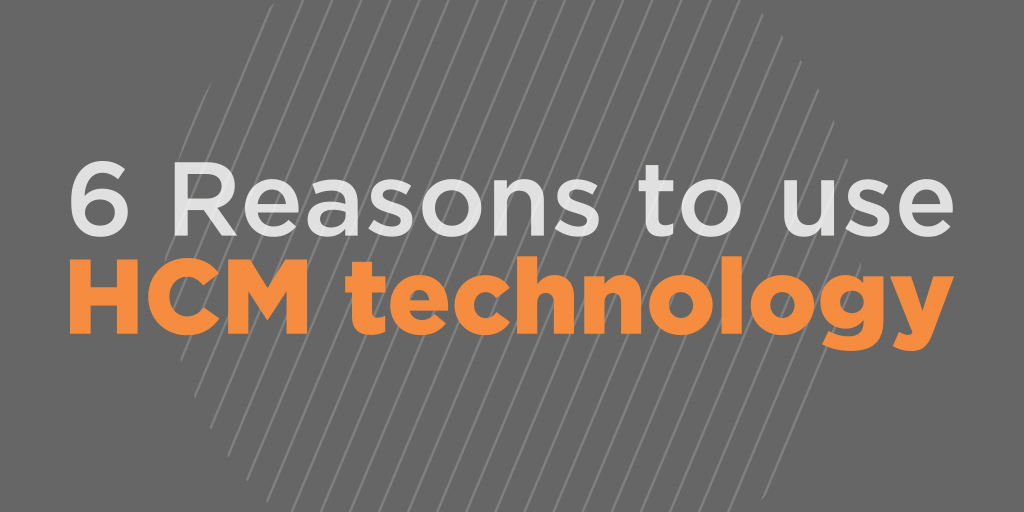Blog, Case Study, HR Metrics, Human Resources Software, Industry Expertise
As businesses embrace the transformative power of advanced HR technology, the importance of choosing the right solutions cannot be overstated.
Highflyer HR and Payroll, as a regional leader, understands the significance of transparent pricing in helping businesses make informed decisions. In this detailed pricing guide, we delve into the key considerations for Applicant Tracking Systems (ATS), Time and Attendance, Payroll, and Benefits Administration technology.
1. Applicant Tracking Systems (ATS):
An ATS streamlines the recruitment process, helping you find the best talent efficiently. Pricing structures can vary based on factors such as the size of your organization, the features you need, and the level of customization required.
- Base Subscription Fee: This often includes essential features like job posting, resume parsing, and basic analytics.
- User Licenses: Some ATS platforms charge per user, while others offer tiered pricing for different levels of access.
- Additional Features: Advanced features such as video interviewing, integrations with other HR tools, and AI-powered candidate matching may incur additional costs.
Implementation and Training: Consider any upfront costs associated with system setup and training.
2. Time and Attendance Systems:
Efficient time and attendance systems are crucial for accurate payroll processing and compliance. Pricing for these systems is influenced by factors like the number of employees, features, and integration capabilities.
- Per Employee or User Pricing: Many solutions charge on a per-employee basis or offer tiered pricing based on the size of your workforce.
- Features and Customization: Advanced features like geolocation tracking, scheduling, and integration with payroll systems may impact pricing.
- Implementation and Support: Factor in costs related to initial setup, data migration, and ongoing customer support.
3. Payroll Systems:
A reliable payroll system is the backbone of HR operations, ensuring accurate and timely payment to employees. Pricing considerations for payroll systems include:
- Base Subscription Fee: Typically includes core payroll processing features and basic reporting.
- Number of Employees: Many providers charge based on the number of employees, so scalability is a crucial factor.
- Tax Filing and Compliance: Some solutions may charge extra for tax filing services and compliance features.
Additional Services: Consider costs associated with features like direct deposit, mobile access, and integration with time and attendance systems.
4. Benefits Administration:
Managing employee benefits efficiently is essential for employee satisfaction and retention. Pricing for benefits administration technology may depend on:
- Number of Employees: Like payroll systems, the size of your workforce often influences the pricing structure.
- Benefits Offered: The complexity and variety of benefits offered, such as health insurance, retirement plans, and wellness programs, can impact costs.
Integration: If the benefits administration system integrates seamlessly with other HR tools, there may be additional charges.
Conclusion:
Navigating the pricing landscape for HR technology requires a careful examination of your organization’s unique needs and priorities. Highflyer HR and Payroll stands as a regional leader, committed to transparent and customizable solutions. By understanding the intricacies of Applicant Tracking Systems, Time and Attendance, Payroll, and Benefits Administration technology, you can make informed decisions that align with your business goals. Contact Highflyer HR for a personalized consultation and take the first step toward enhancing your HR technology infrastructure with clarity and confidence.

Articles, Human Resources Software
Are you trying to cut down on your business expenses this year? Your human resource department may be a great place to do so by using human resource technology.
Keep reading to learn more about how human resource technology can save companies money in Boston Rouge and Lafayette. Make sure your company is running as efficiently as possible while also saving you tons of money by reaping these benefits.
Time Is Money
As you know as a business owner, time is money. You can improve efficiencies with human resource technology that can help you make the most of your staff’s time, one of the most expensive business expenses. The faster you can find qualified applicants to fill roles and turn them into productive employees, the less staff time is wasted within your company.
Human resource technology makes all of your company’s HR duties more efficient with automation and digital organization. This allows you to cut down on the time you spend manually entering data or onboarding new hires. This allows recruitment, testing, applications, and hiring to all be much more seamless while cutting down on time and stress.
Increase Retention
No matter how streamlined your onboarding process is, hiring new employees costs money. For this reason, retention of your talented employees is a great way to cut down on the cost of hiring and training new hires. It costs much less to retain your talented employees than it does to look for new ones.
Human resource technology can help you with retention by making sure your employees feel that their job is up to their expectations. This allows them to feel that they have an outlet that they can turn to for feedback which will boost employee morale. Additionally, you can allow your employees to feel that they are in a company where they have the potential to grow professionally, or possibly continue their education.
By offering your employees access to human resource technology, they will feel that they are supported from their first day and every day after. This also helps your HR department feel that they have the tools to best assist their coworkers. Once you’ve given the HR department this tool, they will be able to integrate it into their onboarding process by engaging new hires and allowing them to know all they need to about the company and their role within it.
This is a great way to keep your company on the same page, as your employees will know what is expected of them from day one. This is also a great tool for tracking employee performance along the way which can keep your employees productive while being able to determine areas that are in need of improvement.
Cut Down on Supplies
Human resourcing management can come with costs such as mailing, printing, and storage, which can really add up. With human resource technology, you can cut down on these costs in this department due to digitalization. This is also a great way to streamline your data and information, as it will be much easier to organize digitally than trying to store and sort through papers.
Human resource technology allows you access to modern software that will store your information safely while cutting down on the physical resources you may have allotted to data management. This allows you to cut down on supply purchasing as well as physical storage space in the office.
Save Your Marketing Dollars
Finding talented individuals to help you make your organization as successful as possible is incredibly important, but it can be difficult to do so without spending a good chunk of your marketing budget. Advertising your job openings on dozens of job listing sites can be expensive and time-consuming but human resource technology can help you make recruitment easier.
With this technology, you can automatically post to hundreds of different job sites with the click of a button. This helps you attract better candidates while also cutting down on the time it takes to fill positions. This not only saves you money, but it keeps your company productive and successful so that you can keep reeling in profits.
Reduce Risks of Litigation
One of the best perks that come with integrating human resource technology into your company is that you can store tons of information that can help you reduce the risks of litigation. HR lawsuits are expensive, so it’s best to avoid them at all costs by keeping information stored, organized, and secure. This can help you prevent lawsuits or end them very quickly.
This helps to reduce the risk of employee-initiated litigation by making sure you are proactively preventing any behavior that could require litigation. First off, HR technology can help you with onboarding and training, and you can make sure each new hire is clear on what the workplace expectations are as well as what the results of certain behavior are. Additionally, by being able to track your employee’s performance, you can stop negative behavior before it results in litigation.
The ability to store and manage employee data allows you access to a record of all the employee’s information from the hiring process onward which can assist you in the case of litigation.
Cut Costs With Human Resource Technology
As you can see, using human resource technology helps you cut down on time, stress, and expenses by automating processes and storing important data.
Are you ready to improve your HR processes in Baton Rouge with the use of human resource technology? If so, contact us today to get started.

Company Culture, Engaged Workforce, Human Resources Software
According to the latest findings from Duke’s Fuqua School of Business, over 90% of CEOs and CFOs consider the culture of their company to be critical to their business success. They know, and studies have proven, that the right company culture improves camaraderie and respect among peers, a comfortable work environment, tenure, and loyalty.
It also improves the quality of service and products, and the ability to attract and keep great talent.
What is company culture?
Company culture is just as palpable as the culture you experience with every new country. It’s how its people speak to each other and the ideas, values, and rituals they share with each other throughout their day. Laid back, competitive, collective, individual—several concepts factor into creating a company identity and developing the supportive structure of benefits, events, support, and motivation for group and personal success.
Where does company culture start and why is it important?
“There’s no question that company culture starts and ends with HR,” says Craig Broome, President at Highflyer HR. “It may trickle down from the executive branch, but human resources is responsible for implementing and maintaining it.” Since a company’s culture plays a huge role in how well its employees engage, perform, and stay in their positions, it is not a small job; according to a 2017 Gallup report on the State of the American Workplace, companies that score ranked with higher engagement percentages have a serious advantage over companies who struggle with employee satisfaction.
And there are significant stats to prove it. Companies with actively engaged employees report:
- 41% lower absenteeism
- 70% fewer safety accidents
- 20% higher sales
- 40% fewer quality defects
- 21% higher profitability.
“Each study that comes out doesn’t say anything that HR managers haven’t known for years,” adds Broome. “It’s not that companies aren’t aware of the dangers of disengagement. It’s that they don’t know how to find time to fix it with everything else they have to do to maintain compliance, payroll, benefits, and administrative functions.”
With company culture being so important, how do human resources managers actively cultivate it given their current workload?
Sometimes it only takes one thing. For several companies, that one thing is automating HR processes and platforms. Doing so not only streamlines and consolidates data, but also validates and protects it from time-consuming errors, report generation, compliance issues, and platform management. By simply removing the slow nature of paperwork, these HR teams can take the time to strategize and implement programs that not only align with company success but the enrichment of their employees.
Disengagement is costly, but an engaged workforce pays for itself and then some. When HR teams have and take the time to develop the culture, it sets up the company for long-term success; candidates are screened based on qualifications and fit, employees feel like they belong to something bigger than themselves, executives can confidently predict performance, and investors see more value. When HR managers have the time and space to work, everyone wins.

ACA Reporting & Compliance, Compliance, Health Benefits, Human Resources Software
Can you see what’s coming for employee health care reporting? The Affordable Care Act (ACA) is burdensome and complex with changes to many different laws or sections of our tax code. With nearly 100 provisions since its enactment, it seems to continually impact employer responsibilities and reporting.
Determining if your company is an applicable large employer (ALE) is just one of the ACA requirements. An employer with more than 50 full-time (or an equivalent combination of full-time and part-time) employees is an ALE. An ALE must offer affordable health plans that provide at least a minimum level of coverage to their full-time employees (and their dependents), or possibly be subject to the employer shared responsibility penalty. Though no employer shared responsibility payments were assessed for 2014, employers must use their 2014 workforce information (e.g., number of employees, hours of service) to determine their criteria for 2015, since the number of employees is a calculated value of full-time and part-time employees over the last 12 months.
The ACA also amended the tax code, adding sections 6055 and 6056. ALEs are required to file information returns with the IRS and provide statements to their full-time employees about health insurance coverage offered by the employer.
| Section 6055 |
|
Section 6056 |
| Insurers and self-funded plans |
|
Applicable large employers |
| Enforce the individual mandate |
|
Enforce the employer mandate |
| Show all individuals who are covered |
|
Show who has been offered coverage |
| Form 1094 B transmittal to the IRS |
|
Form 1094 C; ALE’s transmittal to the IRS |
| Form 1095 B notice to the individual |
|
Form 1095 C; ALE’s notice to the employee |
As you can see, it’s critical that all your workforce data is in one location, making it easy to track critical employee and dependent data needed for required ACA reporting:
- Required identifying information
- Availability of required coverage
- Waivers of available coverage
- Affordability of plans
Highflyer HR’s Human Capital Management (HCM) technology that helps you determine your ALE status and maximum waiting periods for medical enrollments, in addition to running applicable self-funded or fully insured reports. Highflyer HR also provides appropriate filing for companies that fall under the exception reporting for this year. And if you’re curious about potential penalties due to the non-affordability of offered plans, Highflyer HR can show you proactive estimates.
Highflyer HR makes adhering to ACA requirements easier and more efficient. With expert support from our staff, iSolved makes sure you have all of the necessary data collection, forms and procedures so you don’t lose sight of vital compliance issues.
Contact us at 844.398.7800 for more about Highflyer HR and health care reporting compliance.


HCM Technology, HR Software, HR Solutions, Human Resources Software
Most human resource professionals are well aware of the Human Capital Management (HCM) movement. The right HCM technology will streamline HR processes and save the company time and money, both of which should be considered for your ROI.
A recent Nucleus Research study included companies of various sizes and industries and revealed many noteworthy items that confirm implementing HCM can significantly impact your business.
HCM provides hard savings:
- HCM technology returns an average of $9.13 for each $1.00 spent.
- Initial implementation of cloud-based HCM solutions can cost 79% less than on-premise solutions.
- Companies experience about 90% in savings for ongoing maintenance.
Cloud-based HCM provides everything an employer needs to manage their workforce and is in high demand. With today’s business environment, legislation and technology, employers are challenged to do more than just issue paychecks.
Here are six reasons HCM will benefit your business:
- Cloud-based solutions. HCM technology is extremely cost-effective. Cloud-based HCM applications reduce the need for IT support while providing access from any location, with any device. HCM allows multiple customers to access the same application simultaneously.
- Hardware/software upgrades. The cloud technology’s multi-tenancy architecture assures you of always working with the latest version. No more downtime while updates are processing.
- Data security. Data in a cloud-based HCM system provides secure data effortlessly, maintaining high standards and rigorous adherence to government compliance regulations. Important information is protected using superior firewalls and encrypted transmissions.
- Shorter learning curve. Using a single plug-and-play solution consolidates numerous tasks, leaving more time to focus on vital HR related issues.
- Tracking talent management. HCM platforms can cover the entire employee lifecycle, from hiring, onboarding, to training and even termination.
- Better employee engagement. No matter where employees are located, they can access personal data, benefits information, requests for PTO and payroll, relieving HR from time-consuming data management.
Today’s employers need to save time and money wherever possible. HCM technology has numerous benefits that not only streamline processes but can increase your ROI.






